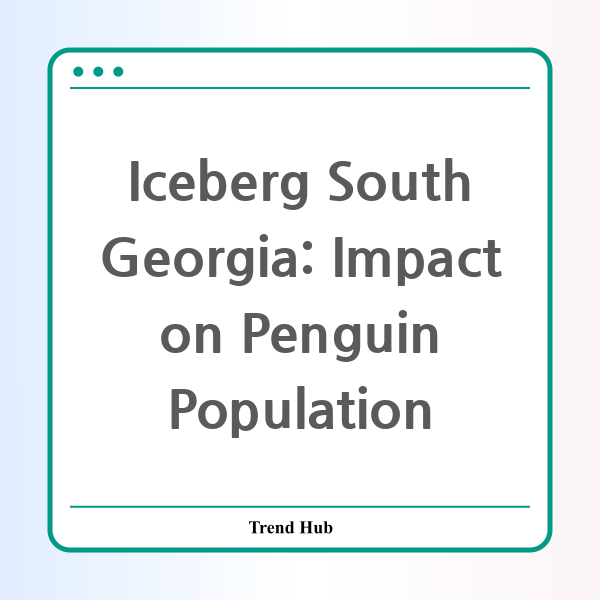* This website participates in the Amazon Affiliate Program and earns from qualifying purchases.

Will the world's largest iceberg disrupt penguin feeding grounds?
In an alarming development, the world’s largest iceberg, known as A23a, is making its way towards South Georgia Island—home to millions of seals and penguins. This massive megaberg, which is larger than Rhode Island and weighs an astonishing trillion tons, has been trapped in the ocean for decades but is now on a collision course with this vital wildlife sanctuary.
The iceberg first calved from the Filchner Ice Shelf in Antarctica in 1986. After remaining stationary for almost 40 years due to the shallow depths of the seabed, it finally became free in late 2023. A23a is now moving along the Antarctic circumpolar current, the fastest ocean current on Earth, and as it makes its way towards South Georgia, experts are raising concerns about the potential threats it poses to the local wildlife.
As the iceberg approaches South Georgia, it could create significant challenges for the resident penguin and seal populations. Adult penguins rely on specific routes to gather food from feeding grounds. If A23a grounds itself near the island, it could obstruct these routes, forcing penguins to swim longer distances to find food. This increased energy expenditure could lead to less food being brought back to their chicks, ultimately affecting survival rates.
Timing is crucial for these penguins. In October, they begin nesting, and any disruption during this period can have dire consequences for their young. An iceberg of A23a’s size could function like an enormous wall, making it nearly impossible for adult penguins to efficiently gather food.
Alongside the potential negative impacts, the melting of this iceberg might also generate some ecological benefits. As it melts, A23a may release valuable nutrients back into the ocean, potentially fostering plankton blooms that could attract krill—the primary food source for many marine animals, including penguins.
How might climate change be influencing iceberg activity?
Some researchers argue that while the calving of A23a is a natural phenomenon, it sheds light on the broader climate issues affecting the Antarctic region. Ice sheets in Antarctica are melting at an accelerating rate due to global warming, contributing to more frequent and larger icebergs breaking off. This has led to increased concerns about the ecological effects on wildlife and global sea levels.
As South Georgia braces for A23a’s arrival, scientists are closely monitoring its trajectory. The interactions between the iceberg and local wildlife are complex and unpredictable. Historical records show that other icebergs have grounded in the region and resulted in catastrophic wildlife impacts.
In conclusion, the journey of A23a towards South Georgia raises urgent questions about the future of the ecosystems it will encounter. Will it create obstacles that could jeopardize penguin populations, or could it inadvertently provide a boost for the oceanic food web? This situation is still evolving, and scientists remain attentive to the potential consequences on this fragile environment.
* This website participates in the Amazon Affiliate Program and earns from qualifying purchases.